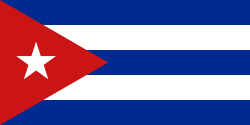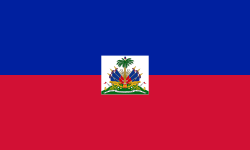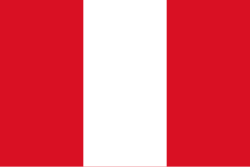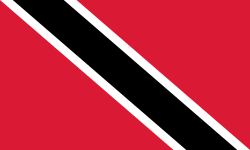Afrikanska diasporan

Med den afrikanska diasporan avses den folkförflyttning (av afrikaner) som ägt rum från Afrika till andra delar av världen under senare århundraden.[1][2][3] Begreppet har historiskt ofta använts för att beskriva ättlingar till de afrikaner som skeppades till Amerika för att arbeta som slavar. I modern tid har begreppet vidgats till att också inkludera afrikaner som emigrerat från kontinenten för att söka utbildning, jobb och bättre levnadsvillkor för sig själv och sin familj.
Länder med flest personer med afrikansk härkomst

| Land | Antal | Noter |
|---|---|---|
| 55 900 000 | inkluderar folk av blandad härkomst, 6,84% (svarta) + 20,6% (mulatto pardos)[4][5][6] | |
| 42 020 743 | inkluderar 3 091 424 som anger sig ha både svart och annan härkomst | |
| 8 788 439 | ||
| 7 985 991 | ||
| 4 944 400 | [7][8][9] | |
| 3 800 000 | ||
| 2 731 419 | ||
| 2 080 000 | ||
| 1 400 000 | [10] | |
| 1 126 894 | ||
| 1 100 000 | ||
| 979 842 | ||
| 875 427 | ||
| 817 150 | [11][12] | |
| 783 795 | ||
| 690 291 | ||
| 680 000 | ||
| 607 472 |
Se även
Referenser
- ^ ”Welcome to the official site of the African Diaspora in Europe”. Arkiverad från originalet den 20 mars 2012. https://web.archive.org/web/20120320171335/http://www.auads.info/.
- ^ Ade Ajayi, J. F; International Scientific Committee For The Drafting Of a General History Of Africa, Unesco (1998-07-01). General History of Africa. ISBN 9780520067011. http://books.google.com/?id=VC7kKcXdDhkC&printsec=frontcover&dq=unesco+african+diaspora#v=onepage&q=%22african%20diaspora%22&f=true
- ^ ”Dictionary definition: African Diaspora”. http://www.highbeam.com/doc/1G2-3424300202.html.
- ^ Parra, Flavia C.; et al (2003). ”Color and genomic ancestry in Brazilians”. Proceedings of the National Academy of Sciences of the United States of America 100: sid. 177–82. doi:. PMID 12509516. Second paragraph
- ^ Carvalho-Silva, Denise R.; et al (2001). ”The Phylogeography of Brazilian Y-Chromosome Lineages”. American Journal of Human Genetics 68: sid. 281–286. doi:. PMID 11090340.
- ^ ”Pardo category includes Castizos, Mestizos, Caboclos, Gypsies, Eurasians, Hafus and Mulattoes Cafuzos”. www.nacaomestica.org/. 2015. Arkiverad från originalet den 2 april 2018. https://web.archive.org/web/20180402232415/http://www.nacaomestica.org/pardo.htm. Läst 15 april 2015.
- ^ Bushnell, David & Rex A. Hudson (2010) "The Society and Its Environment"; Colombia: a country study: pp. 87, 92. Washingtion D.C.: Federal Research Division, Library of Congress.
- ^ ”Ethnic groups in Colombia” (på spanska). dane.gov.co. Arkiverad från originalet den 3 mars 2016. https://web.archive.org/web/20160303233546/http://www.dane.gov.co/censo/files/presentaciones/grupos_etnicos.pdf. Läst 26 mars 2014.
- ^ ”visibilización estadística de los grupos étnicos”. Censo General 2005. Departamento Administrativo Nacional de Estadistica (DANE). http://www.dane.gov.co/files/censo2005/etnia/sys/visibilidad_estadistica_etnicos.pdf. Läst 15 juni 2013.
- ^ Gregorius, Arlene (10 april 2016). ”The black people 'erased from history'”. BBC News. http://www.bbc.com/news/magazine-35981727. Läst 19 juli 2016.
- ^ Mwangi, Jane (19 juli 2012). ”Berlin exhibition exposes plight of Africa migrants”. Reuters. Arkiverad från originalet den 23 juli 2012. https://web.archive.org/web/20120723063233/http://www.reuters.com/article/2012/07/19/us-germany-africa-migration-idUSBRE86I0SB20120719. Läst 10 augusti 2012.
- ^ ”Initiative Schwarze Menschen in Deutschland”. Initiative Schwarze Menschen in Deutschland. http://www.isdonline.de/.
Vidare läsning
- Okpewho, Isidore; Nzegwu, Nkiru (2009). The new African diaspora. Indiana University Press. ISBN 978-0-253-35337-5. http://books.google.ca/books?id=CMg--t-YQWQC&lpg=PP1&dq=African%20diaspora&pg=PP1#v=onepage&q&f=true
- Olaniyan, Tejumola; Sweet, James H (2010). The African Diaspora and the Disciplines. Indiana University Press. ISBN 978-0-253-35464-8. http://books.google.ca/books?id=KEsqd8CkCZ8C&lpg=PP1&dq=African%20diaspora&pg=PP1#v=onepage&q&f=true
- Hine, Darlene Clark; Danielle Keaton, Trica; Small, Stephen (2009). Black Europe and the African diaspora. University of Illinois Press. ISBN 9780252076572. http://books.google.ca/books?id=YH-DgrHLu1UC&lpg=PP1&dq=African%20diaspora&pg=PP1#v=onepage&q&f=true
- Davies, Carole Boyce (2008). Encyclopedia of the African diaspora: origins, experiences and culture, Volume 1. Santa Barbara, Calif: ABC-CLIO. ISBN 978-1-85109-700-5. http://books.google.ca/books?id=nkVxNVvex-sC&lpg=PP1&dq=Encyclopedia%20of%20the%20African%20diaspora%3A%20origins%2C%20experiences%20and%20culture&pg=PP1#v=onepage&q&f=true
- Wisdom, Tettey; Puplampu, Korbla P (2005). The African diaspora in Canada: negotiating identity & belonging. University of Calgary Press. ISBN 1-55238-175-7. http://books.google.ca/books?id=QpoxptJZ73sC&lpg=PP1&dq=The%20African%20diaspora%20in%20Canada%3A%20negotiating%20identity%20%26%20belonging&pg=PP1#v=onepage&q&f=true
- Olliz-Boyd, Antonio (2010). The Latin American Identity and the African Diaspora: Ethnogenesis in Context. Cambria Press. ISBN 978-1-60497-704-2. http://books.google.ca/books?id=hCcMb_2i0SUC&lpg=PP1&dq=African%20diaspora&pg=PP1#v=onepage&q&f=true
- Carter, Donald Martin (2010). Navigating the African Diaspora: The Anthropology of Invisibility. University of Minnesota Press. ISBN 978-0-8166-4777-4. http://books.google.ca/books?id=i2ub33rbk3MC&lpg=PP1&dq=African%20diaspora&pg=PP1#v=onepage&q&f=true
- Conyers, Jr, James L (2009). Racial structure and radical politics in the African diaspora. London : Transaction. ISBN 1-4128-1045-0. http://books.google.ca/books?id=e7uVp3ipwW0C&lpg=PP1&dq=African%20diaspora&pg=PP1#v=onepage&q&f=true
- Curry, Dawne Y; Duke;, Eric D; Smith, Marshanda A (2009). Extending the diaspora : New histories of Black people. University of Illinois Press. ISBN 978-0-252-03459-6. http://books.google.ca/books?id=iLxYa1HpdbgC&lpg=PA157&dq=African%20diaspora&pg=PP1#v=onepage&q&f=true
- Arthur, John A (2008). The African diaspora in the United States and Europe: the Ghanaian experience. Ashgate. ISBN 9780754648413. http://books.google.ca/books?id=OHg2eXlVMykC&lpg=PA1&dq=African%20diaspora&pg=PP1#v=onepage&q&f=true
Externa länkar
Media som används på denna webbplats
Den Dominikanska republikens flagga består av ett vitt centrerat kors som sträcker sig hela vägen ut till flaggans kant. I mitten på korset sitter ett emblem med en bibel, ett gyllene kors och sex dominikanska flaggor. Emblemet är omgivet av olivkvistar och palmblad. Under emblemet står ”Republica Dominicana” och ovanför ett band med landets mottot ”Dios, Patria, Libertad” (”Gud, Landet, Frihet”).
Författare/Upphovsman: Undress 006, Licens: CC BY-SA 3.0
Ethnic composition of the Americas from Francisco Lizcano
Författare/Upphovsman: Allice Hunter, Licens: CC BY-SA 4.0
Map of the African diaspora. (The map might include British Palestine (North Africans), mixed people and people of African ancestry) i.e. African descent
Flag of Jamaica. “The sunshine, the land is green, and the people are strong and bold” is the symbolism of the colours of the flag. GOLD represents the natural wealth and beauty of sunlight; GREEN represents hope and agricultural resources; BLACK represents the strength and creativity of the people. The original symbolism, however, was "Hardships there are, but the land is green, and the sun shineth", where BLACK represented the hardships being faced.
Trinidad och Tobagos flagga



















